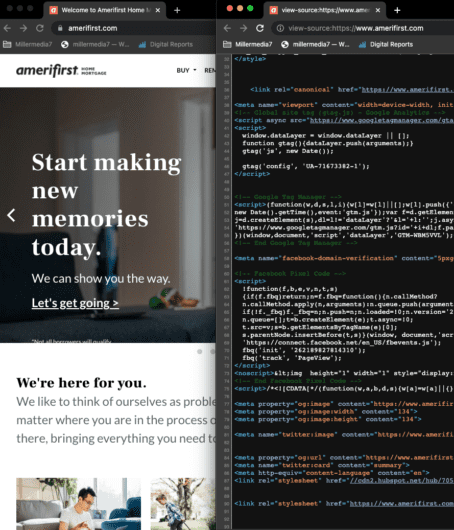
In today's fast-paced business landscape, the ability to innovate quickly is crucial for staying ahead of the competition. Rapid product innovation has emerged as a game-changer for companies looking to bring new ideas to market faster. By leveraging the power of collaboration, businesses can streamline their product development process and achieve remarkable results in weeks. In this article, we will explore the key strategies and steps involved in rapid product innovation, with a particular focus on how large enterprise companies in various industries implement these practices to drive growth and success.
Establishing a Common Vision: Aligning Goals and Objectives
One of the first crucial steps in rapid product innovation is establishing a common vision. By ensuring that everyone involved in the product development process is aligned and working towards the same goals, teams can streamline their efforts and prevent misunderstandings. Now, in turn, to establish a common vision, there are several steps that businesses can take:
Clearly Define the Problem Your Product is Solving
Start by clearly defining the problem your product is solving and why it's important. This initial step helps everyone involved in the product development process understand the purpose and value of the product. By articulating the problem statement, you provide a clear direction for the team to follow. Besides, you ensure that the product addresses a real need in the market.
Identify Your Target Audience and Their Needs
Determine who your target audience is and what their needs and pain points are. This understanding allows you to create a product that meets their specific requirements, making sure everyone on the product development side is aligned with the target audience's requirements. By identifying your target audience, you can subsequently tailor your product to their preferences, which increases the chances of success in the market.
Create a Clear and Concise Product Statement
Once you have gathered all the necessary information, it's time to articulate a product vision in a statement. The latter should clearly identify the product's purpose and unique value proposition. In addition, this statement should be concise and easy to understand, allowing stakeholders to grasp the essence of the product. So, well-crafted product statement acts a pivot, keeping the team focused on the end goal.
Establishing Common Vocabulary: Effective Communication and Collaboration
To ensure effective communication and collaboration among team members, establishing a common vocabulary is essential. By aligning major terminologies and naming conventions, businesses can avoid confusion, improve efficiency, facilitate decision-making, and enhance collaboration. Here are some reasons why establishing a common vocabulary is important:
Avoid Confusion and Misunderstandings
When team members share a common vocabulary, they better understand and meet each other's expectations. Consequently, it reduces the risk of miscommunication or conflicting priorities.
Ensure Alignment
A common vocabulary also helps team members understand and align with each other's objectives. It provides a sense of unity, which is essential for effective collaboration. This alignment fosters a cohesive and effective approach to bringing the product to the market.
Improve Efficiency
Streamlining communication through a common vocabulary reduces the time spent on clarifying terms and concepts, improving efficiency and allowing the team to focus on more critical aspects of the project.
Facilitate Decision-Making
A shared vocabulary additionally enables faster and more confident decision-making based on a shared understanding. This is crucial in a fast-paced project environment where timely decisions are essential.
Enhance Collaboration
By fostering a shared understanding of the project and its objectives, a common vocabulary enhances collaboration among team members. It promotes effective teamwork, better problem-solving, and improved outcomes.
Market Assessment: Understanding Competition and Industry Trends
Conducting a market assessment is another significant step in rapid product innovation. By understanding the market competition and industry trends, businesses can identify gaps and opportunities, ensuring that their product is unique and differentiated. Here's how companies can conduct an effective market assessment:
· Research competition: Analyze the existing products and services in the market to identify direct and indirect competitors. Understand their strengths, weaknesses, and unique selling points to position your product effectively.
· Identify market trends: Stay updated on the latest industry trends and emerging technologies that can impact your product's success. By identifying shifts in customer preferences and market demands, you can align your product development strategy accordingly and stay ahead of the curve.
· Identify gaps and opportunities: Evaluate the market landscape to identify gaps and unmet needs. These gaps present opportunities for innovation and differentiation, allowing you to create a product that addresses a specific market need.

Crafting a Narrative: Communicating the Proposition and Goals for Product Innovation
A well-crafted narrative plays a vital role in rapid product innovation. It serves as a multi-dimensional tool that communicates the essential aspects of the product while also building relationships, driving strategic alignment, aiding decision-making, and establishing a unique presence in the market. To create an impactful product narrative, consider the following factors:
· Provide a detailed understanding of the product: Unlike a simple slogan or tagline, a narrative allows for a comprehensive description of the product. This depth provides stakeholders with a thorough understanding of what the product is and why it's valuable.
· Establish an emotional connection: By weaving a compelling story around the product, a narrative creates an emotional connection with potential customers. This connection builds trust and loyalty, making the product more appealing and encouraging engagement and purchase.
· Ensure strategic alignment: A product narrative ensures that the product's positioning aligns with the overall brand strategy and values. It helps maintain consistency across marketing, sales, and development, fostering a cohesive and effective approach.
· Inform decision-making: A well-crafted product narrative helps internal stakeholders and external partners like vendors and retailers make informed decisions. It guides marketing strategies, sales tactics, and product development, ensuring alignment with the product's core values and goals.
· Articulate differentiation in the market: In a crowded marketplace, differentiation is key. A product narrative allows enough space to articulate what makes the product unique compared to competitors. By elaborating on the unique value proposition, the narrative helps carve a distinctive space in the market.
Rapid Prototyping for Product Innovation: Bringing Ideas to Life
Now, creating a rapid prototype in turn is an integral part of the rapid product innovation process. By developing a tangible representation of the product, businesses can effectively communicate their vision. They can also gather feedback, and accelerate the product development cycle. Here's how rapid prototyping can benefit your product:
· Communicate with stakeholders: A prototype helps you effectively communicate your vision to stakeholders, including upper management, team members, and potential customers. It provides a representation of the product's features/functionalities, making it easier for stakeholders to envision the end product.
· Further ideation: Prototyping allows for further exploration and refinement of ideas. By visualizing the product in a tangible form, you can identify potential enhancements, ensuring the highest standard for the product.
· Obtain product approval: A well-executed prototype can help secure buy-in from stakeholders and gain product approval. Showcase the product's key features and benefits in a tangible format, you can build confidence and excitement around the product. This in turn will increase the likelihood of successful product implementation.
Defining the Most Impactful First Steps: Prioritizing and Roadmapping
When it comes to defining the most impactful steps in a product, several key factors should be considered. By prioritizing the right features and creating a roadmap, businesses can provide a focused and efficient product development process. Here are some steps to consider:
· Define your goals: Before determining the most impactful steps for your product, know what you're trying to achieve. Clearly define your goals, whether it's increasing revenue, improving user engagement, or expanding your customer base. After all, these goals will serve as a guiding framework for prioritization.
· Conduct market research: Understand your customers' wants and needs through market research. You can do so by gathering insights into their preferences, pain points, and behavior to inform your product development decisions. A similar research will help you prioritize features that align with your target audience's needs.
· Prioritize features: Once you have a clear understanding of your goals and your customers' needs, prioritize the features that will have the most impact on achieving those goals. Furthermore, consider the potential return on investment, the level of effort required, and the impact on the user experience.
· Create a roadmap: With your prioritized features in mind, create a roadmap that outlines the steps you'll take to implement them. Include timelines and milestones to keep the team on track and ensure a clear path towards achieving your product goals.

· Test and iterate: As you implement your roadmap, test each feature and gather feedback from users. Then use this feedback to iterate on your product and make improvements that will have an even greater impact on your target audience.
Next Steps: Implementation and Support
Once you have defined the most impactful first steps, it's time to move forward with implementation and support. Consider the following next steps to ensure a successful product launch:
· Join efforts with companies that can help: If you require additional expertise or resources to implement your product, consider partnering with companies that specialize in product development and implementation. Ultimately, these companies can provide valuable insights and support throughout the process.
· Retainer for consultation: Consider establishing a retainer agreement with a strategic development partner to ensure ongoing consultation and support. This arrangement allows you to access expert advice and guidance on an as-needed basis, ensuring that you can navigate any challenges that arise during the implementation process.
· Assist with team building: Building the right team with the proper skill set is crucial for successful product implementation. So, partner with companies that can help you identify and recruit the talent needed to bring your product to life.
By following these steps, businesses can effectively communicate the need for their product, collaborate with stakeholders, and bring innovative solutions to market quickly and efficiently. Rapid product innovation, when implemented with a strategic mindset and a commitment to collaboration and continuous improvement, has the power to transform industries and drive success in today's dynamic business environment.
How Specific Industries Are Implementing Rapid Product Innovation
So far, we can safely declare that rapid product innovation is not limited to a particular industry or sector. Companies across various sectors are harnessing the power of rapid product innovation to drive growth and success. Let's explore how specific industries, particularly large enterprise companies, are implementing rapid product innovation to stay ahead of the competition:
Technology and Software Development
In the technology and software development industry, rapid product innovation is a necessity due to the fast-paced nature of the market. In other terms, large enterprise companies here are continuously seeking ways to bring new and improved products to market quickly. Thus, by adopting agile development methodologies and leveraging rapid prototyping techniques, these companies can develop and launch innovative software solutions in a matter of weeks. As a result, they prioritize customer feedback and iterate on their products based on user insights, ensuring that their offerings meet the evolving needs of their target audience.
Manufacturing and Industrial Engineering

In the industrial engineering industry, rapid product innovation is transforming the way manufacturing companies design and produce goods. Enterprises are embracing technologies such as 3D printing and digital twin simulations to accelerate product development and optimize manufacturing processes. Leveraging these technologies, they can quickly iterate on product designs, reduce time to market, and drive operational efficiencies. Hence, rapid product innovation enables them to stay competitive in a rapidly changing market and respond to customer demands more effectively.
Healthcare and Life Sciences
Patient care and medical advancements are other areas affected by rapid product innovation. Think about artificial intelligence, telemedicine, and wearable devices to develop innovative healthcare solutions. All these can address critical healthcare needs, improve patient outcomes, and drive advancements in medical research. So rapid product innovation is transforming the way healthcare services are delivered by offering personalized and accessible care to a broader population.
Retail and E-commerce
The consumer landscape in the retail and e-commerce is evolving with an unprecedented speed and almost will not make it without rapid product innovation. Indeed, data analytics, machine learning, and augmented reality are here to create personalized and immersive shopping experiences. So, a unique value and well as increased customer engagement is quite guaranteed to drive growth.

Financial Services
Finally, within the financial services industry or financial technology, rapid product innovation is redefining the way companies deliver financial solutions to customers. Innovative financial products and services are being developed through blockchain, artificial intelligence, and mobile banking applications. By rapidly iterating on these solutions, companies can enhance customer experience, streamline processes, and drive financial inclusion in a highly regulated and complex industry.
Final Thoughts on Product Innovation
In conclusion, rapid product innovation is a powerful approach that allows businesses to bring new ideas to market quickly and efficiently. By establishing a common vision, leveraging a common vocabulary, conducting market assessments, crafting compelling narratives, rapid prototyping, defining impactful first steps, and implementing and supporting products effectively, businesses can drive growth and success.
To stay competitive and meet the evolving needs of the customer, companies across various industries are gradually embracing rapid product innovation. By adopting a collaborative and continuous improvement mindset, these companies are transforming industries and driving innovation in today's dynamic business landscape. Have you already gotten a taste of rapid product innovation?














